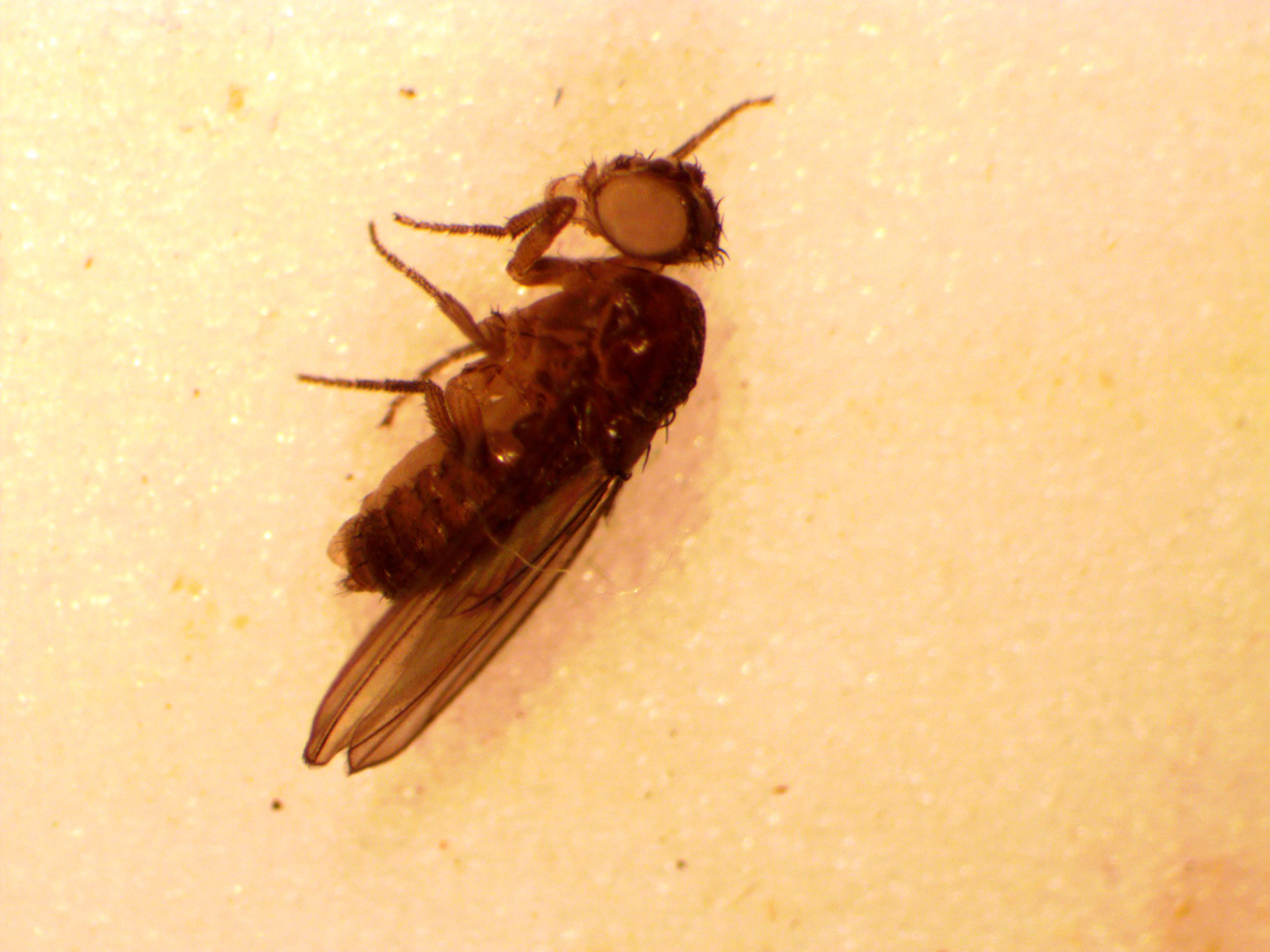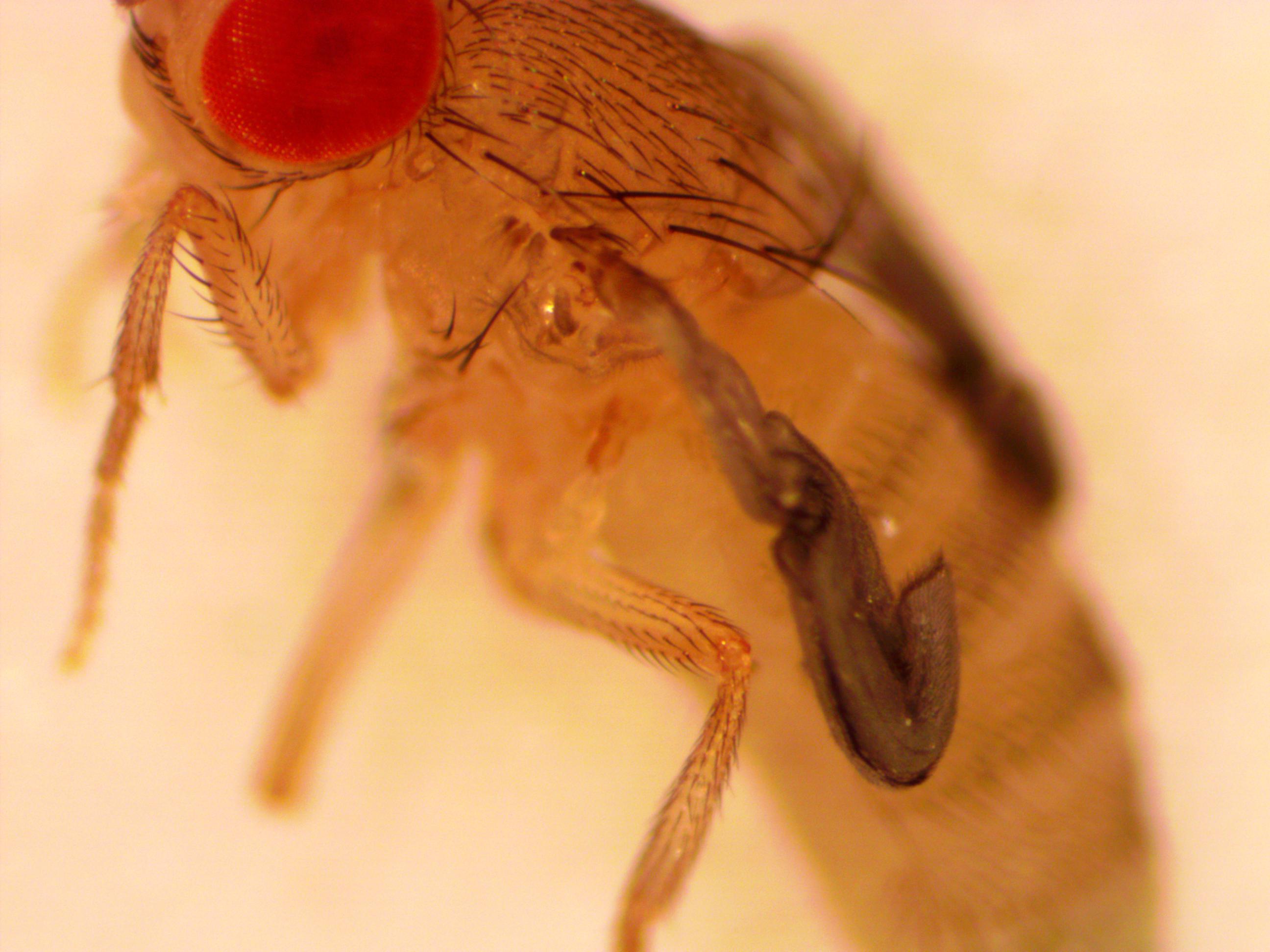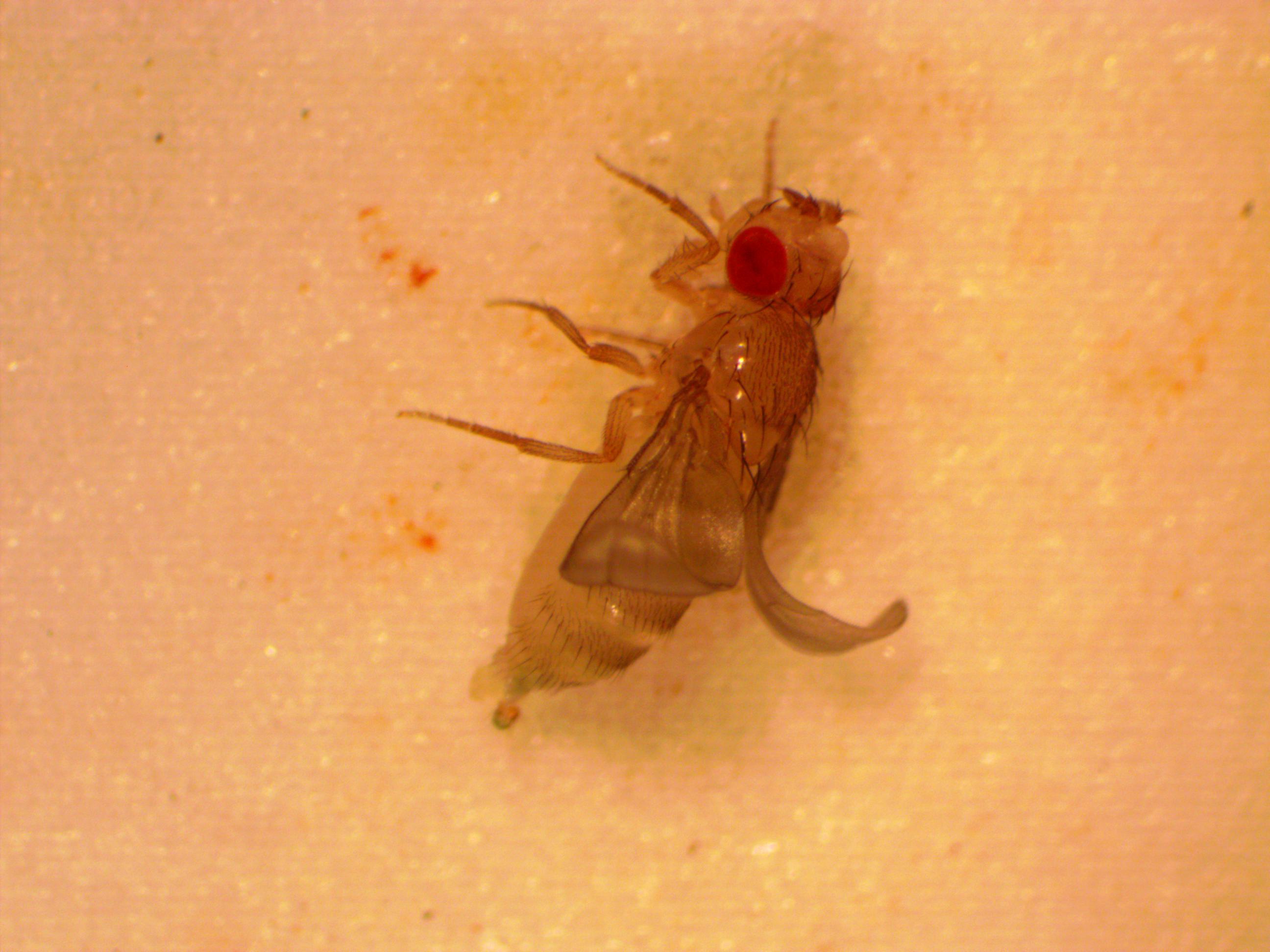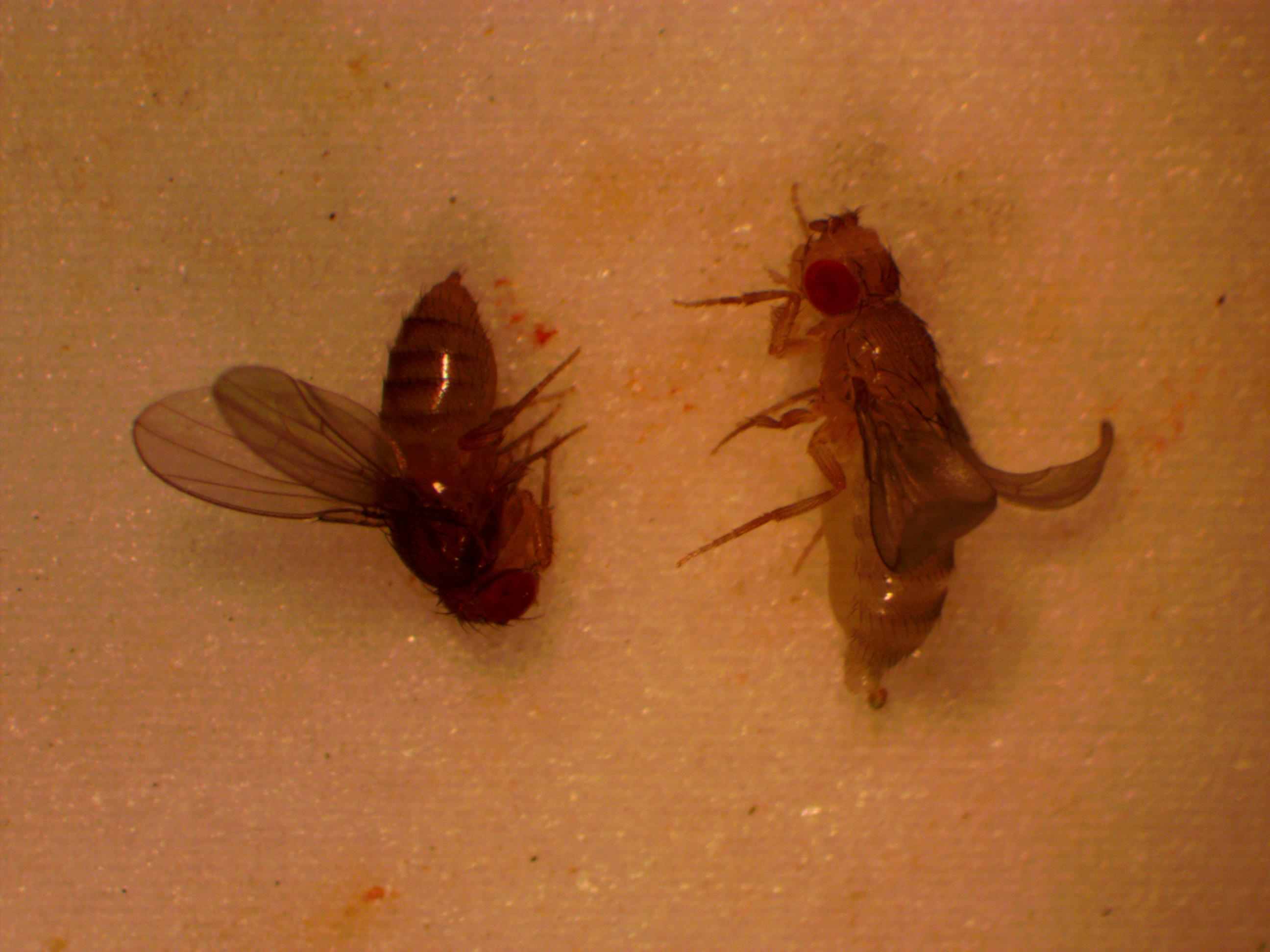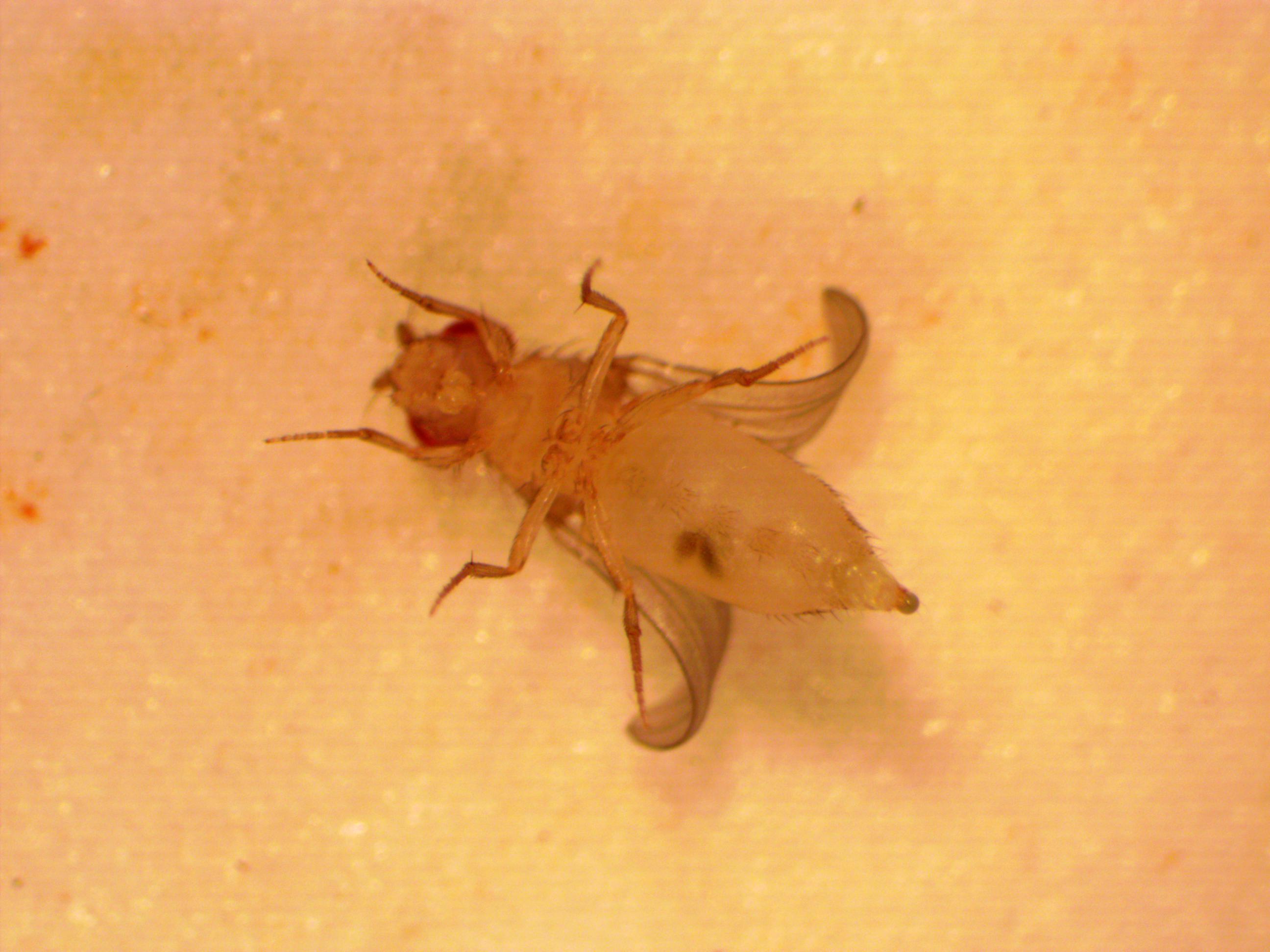Here are some more photos of our flies from the microscope!
Above is a female that is a mutant at three genes. First of all she has white eyes instead of the normal red wildtype. This is a mutation at the white gene on the X-chromosome and can be written as w -. She also has a darker body than normal; this is a mutation at ebony (e-) on the third chromosome (fruit flies have four pairs of chromosomes; the X-chromosome is also called the first chromosome). Finally, the bristles are shorter and twisted instead of long and straight. This is easier to see in the picture below.
This is due to a mutation at another gene on the X-chromosome called singed (sn-). Some mutations are more subtle, but these are easy to see and score in a large number of fly offspring. In past years the students in the genetics class lab mapped the location of genes on the chromosome by measuring rates of recombination with these visible mutants.
Below is a very young adult that has just eclosed (emerged from the pupal case). They are very pale and shaped funny when first eclosing. (This one also has wildtype eye color and normal long straight bristles.)
The wings have not fully extended yet and are still folded up. Below is a close up.
Below is another young fly that is still pale. When they are a bit older they swell up like this. The wings are fully extended but they curl up because of a dominant mutation at a gene called Curly (with a Cy- allele, and the fly has a Cy+/Cy- genotype) on the second chromosome.
Here is a comparison to an older adult female (that does not have the Cy - mutant allele).
Also, there is a dark, off-center, spot on the ventral abdomen of newly emerged flies. It is the remains of the last larval meal in the gut before becoming a pupae and is sometimes referred to as meconium for convenience (though technically this may only apply to mammalian infants).
This is what you want to look for to collect unmated females to set up new crosses. They do not mate within the first few hours of eclosion and this appearance (pale abdomen with a meconium spot) is something fly geneticists spend a lot of time looking for. The even younger, shriveled up, unfolded wing, stage does not last as long.
